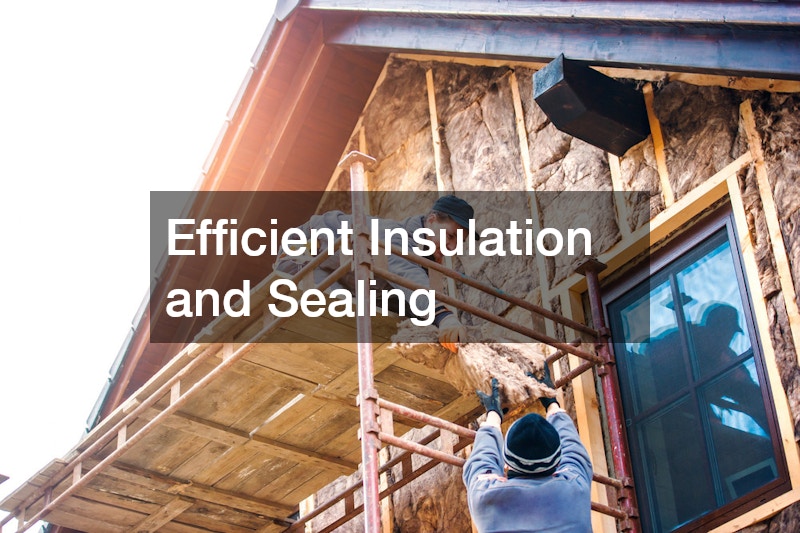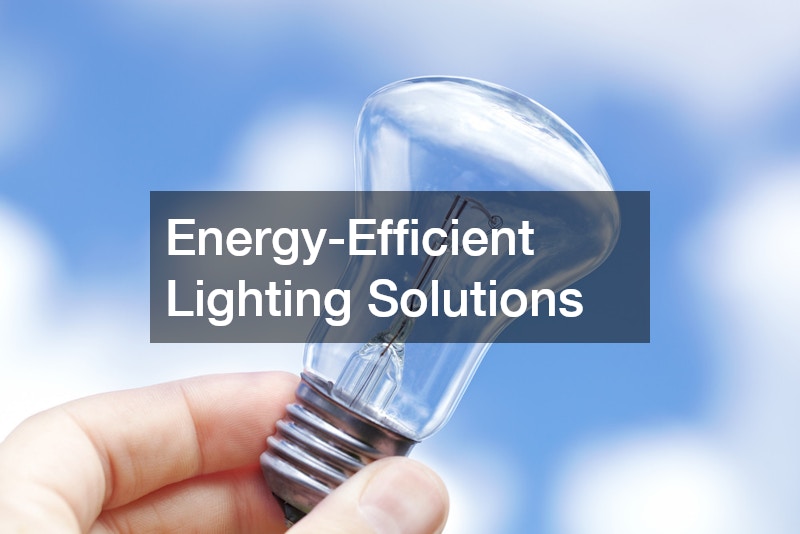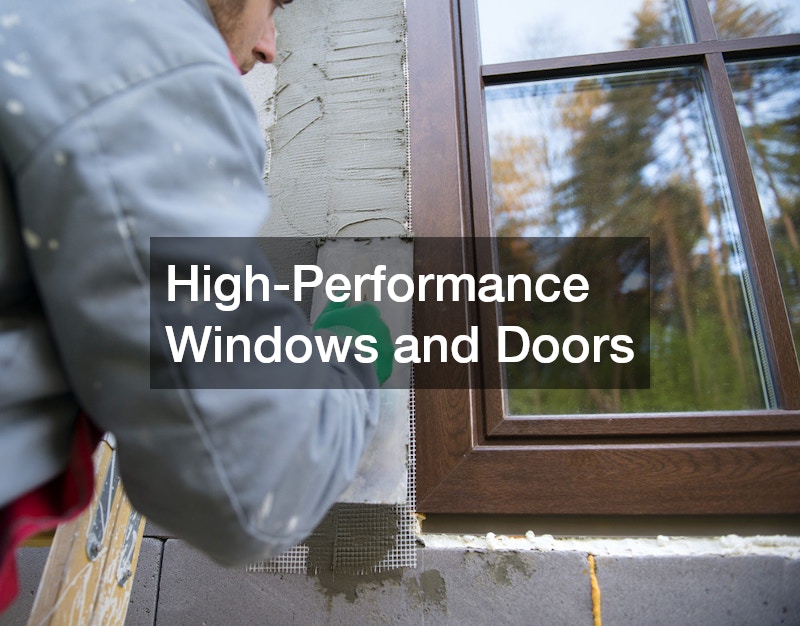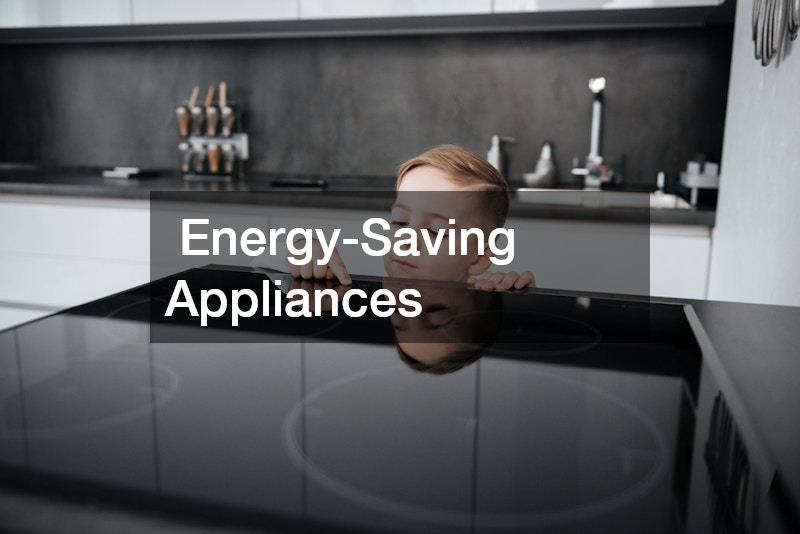Investing in Energy Efficiency
Energy smart homes are becoming a vital part of modern living, especially as people seek ways to reduce their carbon footprint and lower energy costs. These homes are designed with efficiency in mind, combining advanced technologies and sustainable practices to minimize energy consumption. By incorporating a range of features, energy smart homes optimize the use of electricity, water, and heating, allowing homeowners to enjoy the benefits of a comfortable living environment while being environmentally conscious. With global energy demands rising, making homes more efficient is no longer just an option; it’s a necessary step toward a sustainable future. As the housing market evolves, energy-efficient features are increasingly prioritized, adding value to properties and making them more appealing to buyers who are focused on long-term savings and responsible living.

1. Efficient Insulation and Sealing
One of the most critical aspects of energy smart homes is efficient insulation and sealing. Proper insulation helps to maintain a consistent indoor temperature by preventing the loss of heated or cooled air, thereby reducing the need for excessive heating or cooling. This can significantly cut down on energy consumption, as homes lose less energy through walls, ceilings, and floors. In addition to insulation, sealing gaps around windows, doors, and other openings ensures that drafts are minimized, further enhancing the home’s energy efficiency. With well-insulated walls and sealed gaps, energy smart homes can maintain a comfortable living environment while using less energy, which is both eco-friendly and cost-effective.
Specifically, an HVAC contractor plays a crucial role in ensuring that a home’s insulation and sealing are up to standard. They can assess a property’s current insulation, identify areas where energy loss is occurring, and recommend solutions that will improve energy efficiency. This might include adding insulation to attics or basements, weather-stripping doors, and caulking around windows.
2. Smart Thermostat Integration
Smart thermostats are a staple in energy smart homes, offering homeowners the ability to control their heating and cooling systems more efficiently. These devices learn the daily routines of the household and adjust the temperature accordingly, ensuring that energy is not wasted when no one is home. Unlike traditional thermostats, smart versions can be programmed to maintain different temperatures at different times of the day, helping to optimize energy usage. Additionally, they can be controlled remotely through smartphone apps, giving homeowners the flexibility to manage their home’s climate even when they are away. By intelligently managing heating and cooling, smart thermostats contribute to significant energy savings, making them an essential feature of energy smart homes.
A general contractor often oversees the installation and integration of smart thermostats, ensuring they are compatible with the home’s existing systems. They can recommend the best models based on the home’s needs and the preferences of the homeowner. During renovations or new builds, the general contractor can also ensure that the smart thermostat system is incorporated seamlessly into the overall design, wiring, and HVAC systems of the house.

3. Energy-Efficient Lighting Solutions
Energy-efficient lighting is a fundamental feature of energy smart homes, as it drastically reduces electricity consumption compared to traditional lighting options. LED bulbs, for example, use significantly less energy and last much longer than incandescent or fluorescent lights. These bulbs also emit less heat, which helps maintain a cooler indoor environment, particularly during warmer months. Beyond just bulbs, energy-efficient lighting solutions include smart lighting systems that can be programmed to turn off when rooms are unoccupied, further minimizing energy waste. By integrating these lighting technologies, energy smart homes achieve a higher level of efficiency, reducing overall power consumption without compromising on quality or brightness.
In the context of kitchen and bath remodeling, energy-efficient lighting plays a key role in enhancing the functionality and aesthetics of these spaces while maintaining sustainability. Professionals specializing in kitchen and bath remodeling can strategically install energy-efficient lighting fixtures that provide ample illumination without the excessive energy draw of older systems. Whether it’s under-cabinet lighting, pendant lights, or recessed ceiling fixtures, efficient lighting solutions are integrated to ensure optimal visibility and comfort.
4. Solar Panel Installation
Solar panels are one of the most recognizable features of energy smart homes, harnessing the sun’s power to generate clean, renewable energy. These systems convert sunlight into electricity, which can be used to power a home’s appliances, lighting, and heating systems. The adoption of solar panels reduces reliance on non-renewable energy sources, such as coal or natural gas, and helps to lower carbon emissions. Additionally, solar energy systems can lead to significant savings on electricity bills, as they allow homeowners to produce their own power. In some cases, excess energy generated by solar panels can be sold back to the grid, providing an additional financial benefit. By installing solar panels, energy smart homes take a major step towards sustainability and self-sufficiency.
A solar energy company can assess a home’s location, roof structure, and energy needs to determine the best solar panel system to install. They can design and implement a solar energy solution that maximizes the efficiency and energy output based on the local climate and sun exposure. These companies handle everything from the initial consultation and design to installation and maintenance, ensuring that homeowners can easily transition to renewable energy.

5. High-Performance Windows and Doors
High-performance windows and doors are crucial for maintaining the energy efficiency of energy smart homes. Traditional windows and doors often allow a significant amount of air leakage, leading to increased energy consumption as heating and cooling systems work harder to maintain a stable indoor temperature. In contrast, high-performance models are designed to minimize heat transfer and prevent air leakage, making them more effective at insulating a home. These windows are typically double or triple-glazed, with special coatings that reflect infrared light, reducing the amount of heat that enters during summer and escapes during winter. As a result, they contribute to lower energy costs and improved indoor comfort throughout the year.
A window company can provide expert advice on selecting and installing high-performance windows and doors tailored to a home’s specific needs. They assess the property’s layout and orientation to determine which models will offer the best energy efficiency. By choosing the right windows and doors, homeowners can ensure that their energy smart homes are well-insulated and protected from the elements, reducing the need for excessive heating or cooling.
6. Water Conservation Systems
Water conservation is a key aspect of energy smart homes, as efficient water use contributes to overall sustainability. Water-saving fixtures, such as low-flow showerheads, faucets, and toilets, help reduce water usage without compromising performance. Additionally, systems that recycle greywater (wastewater from sinks, showers, and washing machines) allow it to be reused for purposes like irrigation, which conserves even more water. By incorporating these water conservation systems, energy smart homes can significantly lower water bills while also reducing the strain on local water supplies. Efficient water usage is not only environmentally responsible but also essential for maintaining a home’s energy efficiency.
Shower contractors play an essential role in installing water-saving fixtures that blend efficiency with comfort. They can provide a range of low-flow showerheads that deliver a satisfying shower experience while minimizing water use. During bathroom renovations or new installations, shower contractors ensure that all fixtures are fitted to conserve water effectively without sacrificing functionality.

7. Energy-Saving Appliances
Energy-saving appliances are a fundamental component of energy smart homes, as they use significantly less electricity compared to standard models. Appliances such as refrigerators, washing machines, and dishwashers are now available with energy-efficient designs that consume less power and water. These appliances are often certified by energy efficiency standards, making it easier for homeowners to identify models that will contribute to lower utility bills. By replacing old, inefficient appliances with modern, energy-saving versions, homes can greatly reduce their overall energy consumption, leading to a smaller carbon footprint and greater cost savings over time.
When undergoing renovations, a home restoration service can help homeowners select and install the latest energy-saving appliances. They assess the current appliances and suggest upgrades that align with the energy-saving goals of the household. For instance, they might recommend high-efficiency washing machines that use less water per cycle or refrigerators that maintain optimal cooling with minimal power usage.
8. Renewable Energy Storage Options
Renewable energy storage is essential for energy smart homes that rely on alternative energy sources like solar or wind power. While generating renewable energy is a great step, storing this energy ensures that it can be used even when the sun isn’t shining or the wind isn’t blowing. Battery storage systems allow homeowners to save excess energy generated during peak production times, making it available for use during the night or cloudy days. This not only ensures a consistent energy supply but also maximizes the efficiency of renewable energy systems. Energy storage solutions make energy smart homes more self-sufficient, reducing dependence on the traditional power grid.
Roofing contractors often play a key role in installing renewable energy storage systems, especially in homes with solar panels. They can advise on the best placement for battery units to ensure they are integrated seamlessly with the home’s energy system. Additionally, during roof installations or repairs, roofing contractors can prepare the structure to accommodate energy storage units, ensuring they are protected from weather conditions and securely installed.
9. Sustainable Building Materials
Using sustainable building materials is a cornerstone of energy smart homes, as these materials have a lower environmental impact compared to traditional options. Sustainable materials can include recycled wood, bamboo, reclaimed metal, and eco-friendly insulation products. These materials are chosen not only for their durability but also for their ability to reduce energy consumption during production and transportation. Additionally, sustainable building materials often have properties that contribute to better insulation, which helps maintain a comfortable indoor climate with less energy usage. By opting for eco-friendly materials, energy smart homes can further minimize their carbon footprint and promote sustainability.
Fence contractors can assist homeowners in selecting and installing sustainable fencing options that complement the overall design of an energy smart home. For instance, they might recommend fences made from recycled or sustainably sourced wood, or even composite materials that are long-lasting and low-maintenance. These materials can help maintain the aesthetic appeal of the home’s exterior while aligning with its eco-friendly values. By integrating sustainable materials into outdoor structures like fences, homeowners can ensure their energy smart homes are designed with sustainability in mind from the inside out.
10. Automated Energy Management Systems
Automated energy management systems are one of the most advanced features of energy smart homes, allowing homeowners to monitor and control their energy usage more effectively. These systems collect data from various devices in the home, such as heating and cooling units, lighting, and appliances, to provide insights into energy consumption patterns. With this information, homeowners can make informed decisions to reduce waste, such as adjusting the thermostat or turning off unused lights remotely. Automation further enhances efficiency by ensuring that systems are only active when needed, which leads to lower utility bills and a reduced environmental impact.
During the installation of new driveways or walkways, a paving service can incorporate automated systems that complement the energy smart home’s design. For example, they can help integrate systems that control outdoor lighting based on motion sensors or daylight availability, ensuring that lights are only on when necessary. By coordinating with a paving service, homeowners can expand their energy management solutions to outdoor spaces, creating a comprehensive approach to sustainability that benefits the entire property.
Maintaining New Energy Changes
Energy smart homes represent the future of sustainable living, combining modern technology with eco-friendly practices to create efficient, comfortable living spaces. By incorporating features such as efficient insulation, smart thermostats, solar panels, and energy-saving appliances, these homes significantly reduce energy consumption and promote environmental stewardship. Each element of an energy smart home plays a critical role in minimizing waste and maximizing efficiency, from the materials used in construction to the advanced systems that automate and manage energy use. As energy costs continue to rise and environmental concerns grow, the shift toward smarter, more efficient homes is not just a trend but a necessary evolution in home design.
